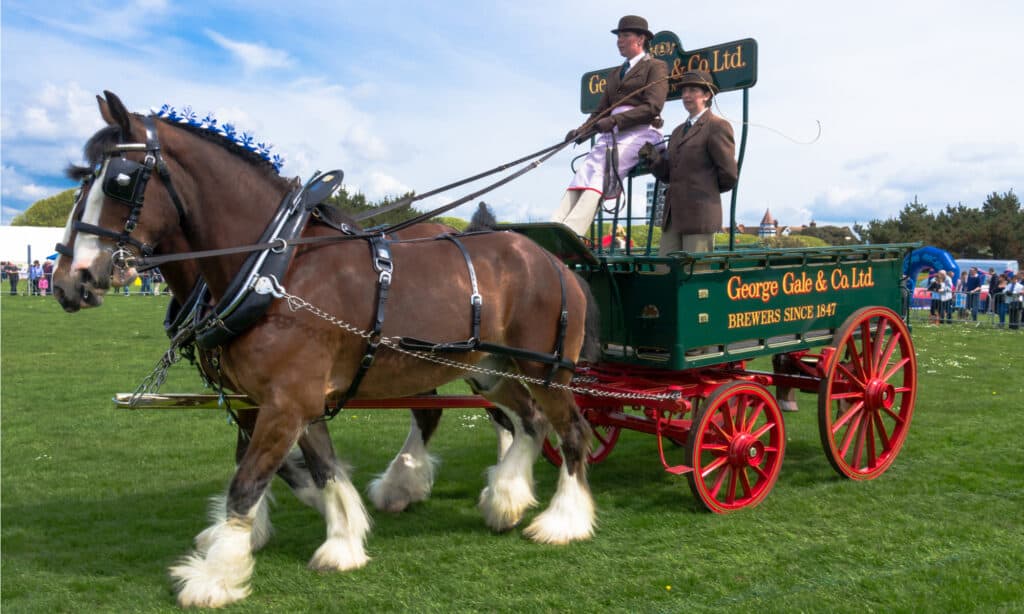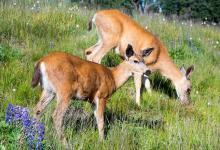See Just How Big the World's Tallest Horse Is in This Up-Close Video (Weighs More Than an SUV!)
This is one huge ! His name is King Buck and he stands 19.3 hands tall and weighs 3,126 pounds. The biggest horse ever recorded was a shire horse called Sampson. He reached a staggering 3,359 pounds and stood 22 hands tall. He lived during the 1800s in Bedfordshire in the UK. Another huge horse was Big Jake, who measured 22 hands tall and weighed 2,260 pounds – he was a Belgian. As the clip at the bottom of this page shows, these horses really are magnificent of animals.
Which Is the Largest Horse Breed in the World?

©Simev/Shutterstock.com
Shire horses the . They originate from the UK, and they were originally bred to pull heavy carts on farms, in coal mines, and for breweries. This is why they were called a draught horse. Some still use shire horses to pull their machinery. They are usually black, bay, brown, or gray but they can be other colors. This breed is considered to be strong but manageable.
became an established breed in the mid-18th century but they originated a long time before that. Many were exported to the United States in the late 19th and early 20th century. However, as agriculture became more mechanized, the need for these horses declined. By the 1960s, there were only a few thousand left. The breed is still considered at risk.
How Much Do Horses Eat?
Horses are herbivores and need a lot of fiber to keep their sensitive digestive tract working properly. They must eat little and often. In fact, they spend most of their day eating. Horses eat grass, hay, or haylage but their diets are often supplemented with concentrates and fruit and vegetables. As a rough guide, an adult horse should eat dry matter that weighs between 1.5 and 3 percent of their body weight. An active horse, however, will need even more!
Which Is the Smallest Horse Breed in the World?
The Falabella is generally recognized as the smallest horse breed in the world. Their height to the withers (part of the spinal column that projects upwards between the shoulder blades) ranges from 25 to 34 inches! It can trace its ancestry back to Spanish horses such as the Andalusian which were brought to South America from the 16th century. Some were taken up to isolated areas outside Buenos Aires and joined herds belong into the indigenous people. They developed an incredible resistance to the harsh terrain and climate of the area. They could travel long distances, find water, and forage. Then, in the mid-1900s, they were mixed with Criollo stock in a breeding program that was eventually spearheaded by Juan Falabella. He gave his name to the breed.









